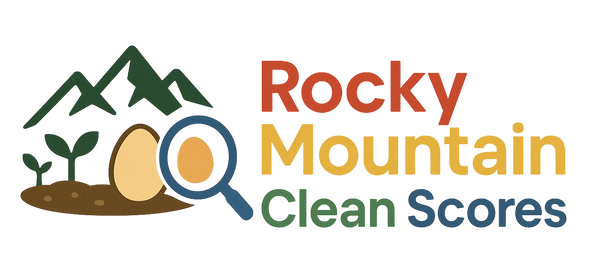What is PFAS, How does it get into Eggs and Why might it be Dangerous
What is PFAS?
Per- and Polyfluoroalkyl Substances, or PFAS, are man-made chemicals known as "forever chemicals" for their resistance to breaking down in the environment. Developed in the 1940s, they became widely used by the 1950s in products such as non-stick cookware, fabric protectors and firefighting foams. Although production of some PFAS, like PFOA, has been phased out in the U.S., global manufacturing of newer variants continues to grow. This persistence raises serious concerns about their presence in our environment and their ability to contaminate food.
See our selection of news articles about PFAS in our supply.
How PFAS Contaminates Eggs
PFAS can infiltrate the food chain through contaminated water, soil, or air, often from industrial discharges, agricultural runoff, wildfires releasing PFAS-containing firefighting foams, or localized incidents like a fence fire extinguished with such foams. Chickens ingest these chemicals via contaminated feed, polluted water, or foraging in tainted soil, particularly through earthworms, which accumulate PFAS. These substances then build up in eggs, primarily in yolks due to their affinity for proteins and lipids, though detectable levels—typically less than 15% of the total PFAS load—are also found in whites. Recent studies in the Netherlands by the RIVM (the "Dutch CDC") show that home-produced eggs are heavily contaminated, with over half of tested locations exceeding safe PFAS intake levels even with minimal consumption. This finding has led to a nationwide advise against eating home-produced eggs. Although U.S. studies are lacking as of yet, caution is warranted
Why PFAS Might Be Dangerous
Exposure to PFAS is linked to serious health risks, including increased chances of certain cancers, immune system suppression, and hormonal imbalances, with studies showing these chemicals can disrupt thyroid function and liver health. Research from the CDC confirms that PFAS accumulate in the human body over time through dietary sources like contaminated eggs, building up in blood and tissues. Regulatory bodies, such as the EPA and FDA, have set stricter guidelines to limit PFAS in food and drinking water, reflecting growing concern about their toxicity. Particularly vulnerable groups, such as children and pregnant women, face heightened risks from even low-level exposure, which can affect development and long-term health, making it critical to address PFAS contamination in everyday foods like eggs.
Implications for Backyard Chicken Holders and Hobby Vegetable Growers
For backyard chicken holders and hobby vegetable growers, PFAS contamination poses a significant challenge, as their flocks and gardens are often exposed to local environmental sources like contaminated soil, water, or nearby industrial sites. Without access to specialized testing, many of these growers are unaware of PFAS in their eggs or produce, which can undermine confidence in their fresh, sustainable food. The growing popularity of backyard poultry and home gardening, driven by a desire for local, wholesome products, makes this issue critical, as contaminated eggs or vegetables can pose serious health risks to those seeking healthy, sustainable choices. Rocky Mountain Clean Scores is committed to supporting these growers with testing resources and guidance on PFAS-free practices, ensuring their eggs and produce remain safe.
Call to Action and Solutions
Measuring is a start—understanding PFAS levels in your environment is the first step toward safer eggs and produce. At Rocky Mountain Clean Scores, we’re working to empower backyard chicken holders and hobby vegetable growers with accessible testing services to detect PFAS in eggs, soil, and water, alongside practical guidance for reducing contamination risks. We encourage growers and consumers to choose PFAS-free feeds, monitor local environmental sources, and advocate for stricter regulations to limit PFAS use. Together, through informed choices and innovative solutions, we can protect the health of our communities and ensure that homegrown food remains a safe, sustainable choice.
